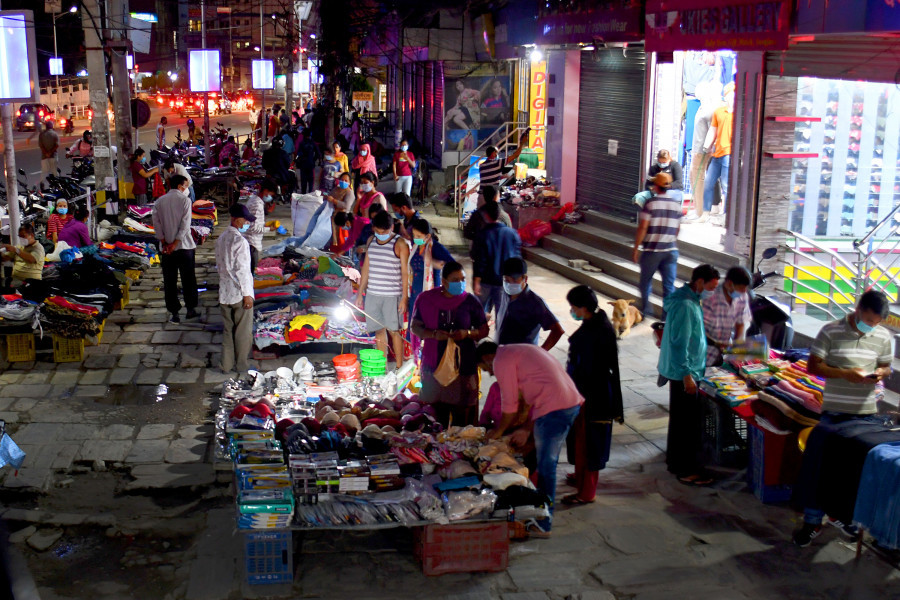Columns
Reinvigorating the streets
Municipalities have succeeded in grouping vendors in a pedestrian, mall-type environment.
Barsha Chitrakar
A long stretch of street adorned with stalls, kiosks and carts selling varied items—all of us are familiar with this street scene in most parts of our cities. Most of the vending activities are found in places with greater agglomeration of people and varied functions—such as transit hubs, bus stops and market centres. One key feature of street vending is its nature of temporariness in that it occupies a space temporarily which, however, lasts for longer period of time.
Studies show that mostly low-income households with lower educational qualifications are employed in this sector. This is attributed to less income generating opportunities in the cities, and low capital and professional skills required for street vending. At the same time, street vending has become a seminal source of income for well-educated groups too who are found to profit relatively more because of their skills in business management, marketing and use of technology. In many developing countries, women represent more than half of the street vendors with increased capability in financial agency and grassroots entrepreneurship.
Street vending is seen as a business incubation centre to learn the steps of urban retail market that can help the vendors with start-ups and formal entrepreneurship in later stages. It also acts as a micro-scale urban design intervention that brings vitality to otherwise dull public spaces. The arguments for street vending mainly come from perceiving it as a source of employment and tool for revitalising public spaces.
Impacts of street vending
Street vendors often attract potential customers and become unfair competition to formal retailers and taxpaying off-street businesses. This generates negative economic effects on the formal commercial sector. However, in many cities, street vendors negotiate with off-street retailers to manage vending and other issues (access to utilities such as electricity and water, space arrangements and circulation). This kind of synergy in terms of space and visibility contributes to increased pedestrian flows which is vital for business of any kind.
The increased pedestrian flow generated by street vending activities contributes to excessive garbage, vehicular and pedestrian congestion which can impede access for emergency vehicles and also increase the level of traffic accidents and pollution. The arguments against street vending come from perceiving it as a prominent element of chaos and disorder in the city. Management of waste generated by street vending is a challenge which poses health issues.
Street vending is difficult to dismiss and regulate for city authorities. Policies and regulatory measures taken by the authorities usually perceive street vending as an unsightly nuisance and are guided towards eviction campaigns against street vendors to make them invisible. One common approach taken by government authorities is zoning ordinance which assigns certain areas as public or private markets for street vending. Experiences show that while a few such attempts have been successful, many are deserted mainly due to insufficient customer flows. Zoning regulation may work if due consideration is given to commercial activity by strategically locating street vending in places with a greater number of customers and proximity to transport hubs.
Some city authorities encourage existing shops to use sidewalk as vending sites to increase their customer base and generate additional business for other vendors as well. This is guided by an objective to conglomerate varied market activities and people in one place. Led by this notion, municipalities have succeeded in grouping vendors in a pedestrian, mall-type environment either in enclosed arcades or open downtown areas. However, enclosed commercial arcades can limit or totally exclude some street vendors thereby creating exclusionary urban spaces with gradual privatisation of public spaces primarily for big businesses.
Another tool city governments use to control street vending is threats and intimidation with the aid of security and police personnel. It is found that street vendors use coercion and negotiation with local officials and criminals as a form of bottom-up resistance to ensure their continued access to public spaces. In some cases, vendor associations and non-governmental organisations support in enabling street vendors to claim their rights to the city and resist exclusionary policies. The Street Vendors Association of Los Angeles with support from the city council succeeded in legalising street vending in a designated area of the city in 1999 after a decade-long advocacy and collective agency.
A conciliatory path
Limitations to formal sector employment and increasing migration from rural to urban areas will lead to increased number of street vendors in cities worldwide. It is clear that street vending cannot be assigned as a marginal activity subject to elimination and hostility. Both the arguments for and against it are considerably valid. The challenge lies in identifying desirable forms of vending, encouraging activities in designated locations, deciding the limit of pedestrian flow and enforcing measures to mitigate the resulting congestion. Other criteria include right-of-way of streets, width of sidewalk, traffic constraints and street design components such as seating elements, lighting and more.
A collaborative space making approach centred on time-sharing concept whereby certain areas are allowed for certain street vending activities for a given time of the day to reduce potential congestion and excessive commercialisation of public spaces has worked in some cities. Others have employed legal reforms which includes setback compliance from certain locations such as institutional buildings and street intersection to operate street vending.
Some city governments make it mandatory for vendors to obtain a license or permit with nominal fees to operate street vending in designated locations or a location of their choice. This promotes street business, protects law-abiding vendors against any form of violation and also raises city government’s revenue. Ensuring that licensed vendors are working in approved locations is, however, another challenge. To facilitate this, many city authorities have formed a separate license and permit unit within their governance structure. They have also trained vendors on environmental regulations and imposed compliance to manage trash generated within a certain distance of the approved location designated on the permit on their own.
Experience suggests that street vending approaches and regulations that stem from perceiving street vending as an employment opportunity with its role in enhancing walkability, urban safety and neighbourhood revitalisation become successful. Vendors too need to acknowledge compliance of some rules to claim their rights to work in public spaces and also to reinforce collaborative use of streets as shared spaces.




 15.12°C Kathmandu
15.12°C Kathmandu















